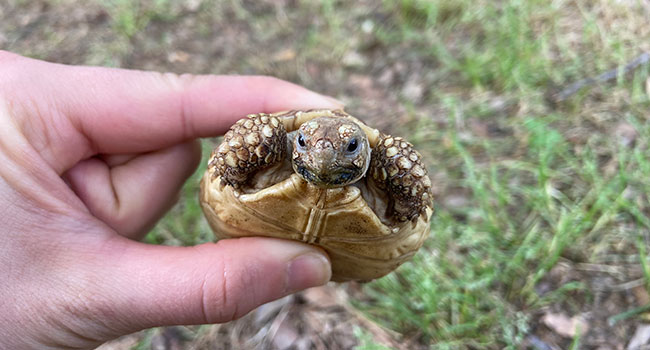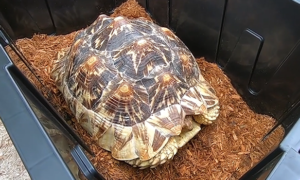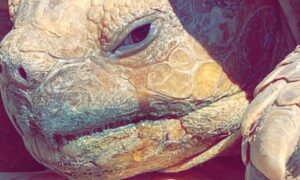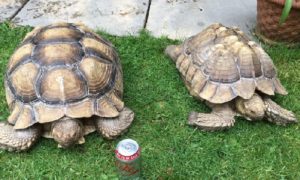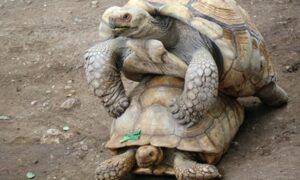Both the carapace and the plastron of a sulcata tortoise shell should be hard. However, when raising a baby sulcata tortoise, you may become concerned if your baby sulcata tortoise has a soft shell.
Cause of Soft Shell in Tortoise
There could be a number of reasons your baby sulcata tortoise has a soft shell.
Age
Baby sulcata tortoises naturally have a semi-soft shell, but the shell hardens by 6 to 9 months of age. It is normal for the shell to be slightly pliable, but not spongy.
With age, the baby tortoise’s shell will harden.
It is common for the top of the shell (the carapace) to be hard and for the bottom of the shell (the plastron) to be soft. With a healthy diet and proper housing, the plastron will harden over time.
Bad Diet
Sulcata tortoises need a diet with high fiber. Sulcatas should eat 80% grass and hay. Even baby sulcata tortoises should eat a diet high in grass and fiber. If the baby tortoise is is not eating a proper diet, it can take longer for the shell to harden.
If the diet is not corrected, it can become fatal. It is important to ensure proper diet and calcium supplementation.
Improper Supplements
Along with diet, if a baby sulcata isn’t getting the right calcium and vitamin supplements, the tortoise can suffer metabolic bone disease. Metabolic bone disease can cause a soft shell.
A proper diet should be enough to ensure proper calcium and vitamin ratios. However, to ensure the baby tortoise is consuming enough, supplement with a good calcium and vitamin.
Add a calcium supplement a few times a week. On a non-calcium day, once a week, sprinkle a vitamin supplement.
Incorrect Housing
Without proper heating and lighting, the baby tortoise is more susceptible to becoming ill.
Poor UVB could be a cause of a soft shell. Tortoises need UVB rays to help with calcium absorption and to maintain a good calcium phosphorus ratio. If you are using a UV tube or UV bulb, it’s important to check the UVB output. Use a solar meter to monitor the UV output from an indoor UV source.
Sulcata tortoises need an intermediate UVB zone between zones 3 and 4. The basking UV Index should be between 2.9 and 7.4.
Treat Sulcata Tortoise Soft Shell
If you are doing everything right in regards to diet and housing, and your baby sulcata still has a soft shell, consult a reptile vet.
- The ambient temperature is 80 – 90-degrees Fahrenheit.
- The basking temperature is 100-degrees Fahrenheit.
- The UV source is still giving good UVB output, or you are going outside for natural UV rays.
- The diet is primarily grass and weeds.
- You’re supplementing calcium and vitamins on a schedule.
Depending on the age of the tortoise, it is normal for the shell to be a little pliable. However, if the shell is spongy or squishy, you’ll want to consult your vet. You may need to increase calcium, increase heat or change the UV source.

